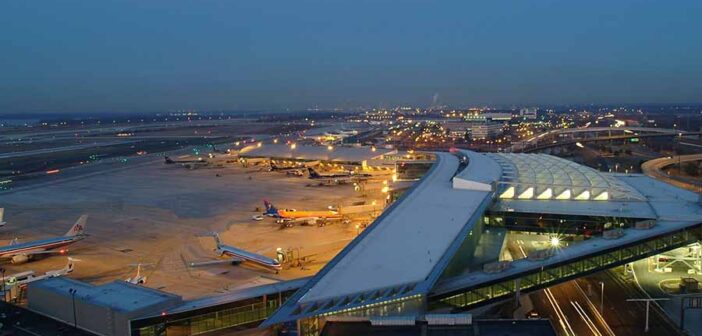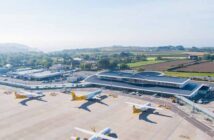Philadelphia International Airport, located just 11 kilometres from downtown Philadelphia, serves as a bustling hub for over 30 million passengers annually, offering a practical and well-equipped gateway to the northeastern United States and beyond. As a major hub for American Airlines and a focus city for Frontier Airlines, this airport connects travellers to over 130 domestic and international destinations with nearly 500 daily flights, ensuring a welcoming experience for those exploring the city or catching connections.
Accessing the airport is convenient with multiple transport options. The SEPTA Airport Line train provides a 25-minute ride to Center City Philadelphia for $6.75, with departures every 30 minutes from terminals A, B, C, D, and E. SEPTA buses, including Routes 37, 108, and 115, connect to South Philadelphia, Chester, and Delaware County for $2.50.
Taxis and rideshare services like Uber and Lyft are available outside baggage claim, with fares to downtown averaging $25–$35 and a 20–30-minute journey, depending on traffic. Drivers can use Interstate 95, with parking options including short-term garages and the Economy Lot, served by 24/7 shuttles. A cell phone waiting lot allows free pick-up parking, easing curbside congestion.
The airport’s layout comprises seven terminals—A-West, A-East, B, C, D, E, and F—spanning 2,302 acres with 140 gates, all connected post-security for easy navigation. Terminals A-West and A-East handle international flights, with A-West serving as the main arrivals hub. Terminals B and C, linked by a shopping mall, primarily host American Airlines, while Terminal F caters to regional flights with 38 gates. Free shuttles connect Terminals A, C, and F, with a 15-minute walk between the furthest points, C and F. Clear signage and the Navigate PHL map assist passengers, though peak periods can lead to crowded security lines. Arriving two hours early for domestic flights and three hours for international ones is advised to manage check-in and security, especially in Terminals A and B.
Dining and retail options cater to diverse tastes across the terminals. Popular spots like Chickie’s & Pete’s in Terminals A, C, and E offer local favourites such as crabfries and cheesesteaks, while Dunkin’ and Starbucks provide quick coffee fixes. Terminal B/C’s shopping mall features eateries like Shake Shack and retail outlets selling electronics, souvenirs, and clothing. Duty-free shops in Terminal A-West stock fragrances, cosmetics, and local goods like Philadelphia-made chocolates. The airport’s street-pricing policy ensures fair costs, though no restaurants operate 24 hours, so late-night travellers should plan accordingly.
Facilities enhance passenger comfort with practical amenities. Free Wi-Fi is available throughout via the “PHL-Free-WiFi” network, and charging stations are plentiful in airside areas. Eight lounges, including the American Airlines Admirals Club in Terminals A-East, A-West, B/C, and F, and the Centurion Lounge in A-West, offer relaxation for eligible passengers. A children’s play area in Terminal A-East and pet relief areas in every terminal cater to families and pet owners. Passengers with reduced mobility can access wheelchair assistance, designated parking, and priority lanes, arranged through airlines. A quiet room in the D/E connector provides a space for reflection, and Travelex currency exchange kiosks operate in Terminals A and D. However, luggage storage is unavailable, with nearby train stations offering alternatives.
On-time performance is generally reliable, with real-time updates accessible via the PHL app, Flightradar24, or in-terminal flight displays. American Airlines dominates with 65% of operations, alongside carriers like Delta, Southwest, and BA. Delays, when they occur, often stem from weather in Philadelphia or connecting cities like Chicago, as the airport operates in one of the busiest airspaces globally.
Security and passport control in Terminal A-West can also slow progress during peak times.
Connections are efficient, particularly for American Airlines passengers, with automatic baggage transfers on single-ticket itineraries. Minimum connection times are 60 minutes for domestic flights and 90 minutes for international ones, though separate-ticket travellers should allow extra time for baggage reclaim. Shuttles and walkways ensure smooth terminal transfers, with Terminal A’s layout facilitating international-to-domestic connections. The airport’s tarmac-to-tarmac bus service connects PHL to nearby airports for select routes, enhancing regional access.
Potential delays to watch for include long security queues in Terminals A and B during morning rushes, exacerbated by staffing shortages or high passenger volumes. Technical issues with aircraft, particularly on low-cost carriers like Frontier, and air traffic control constraints in the busy Northeast corridor can also cause disruptions. Some travellers have reported inconsistent staff responsiveness, so using TSA PreCheck lanes in Terminals A-East, C, and D/E or the PHL app for updates can save time.Philadelphia International Airport offers a functional and traveller-friendly experience. Its accessible transport links, clear layout, and solid range of amenities make it a dependable choice for exploring Philadelphia or connecting to global destinations.




